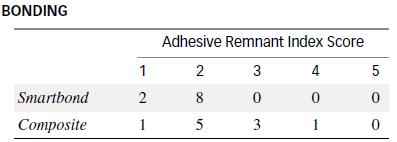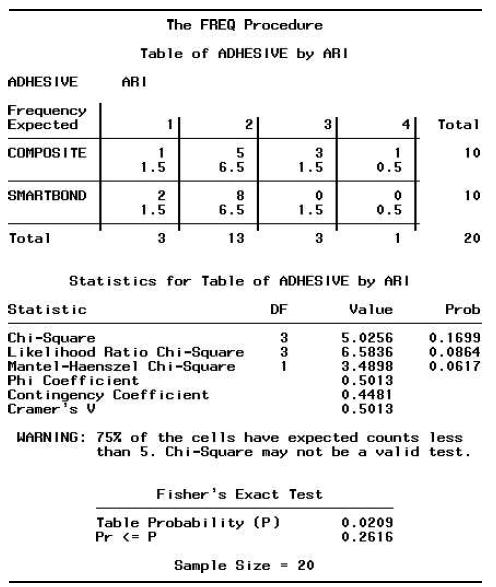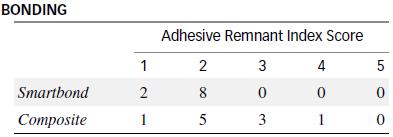Refer to the Trends in Biomaterials & Artificial Organs (Jan. 2003) study of a new bonding adhesive
Question:
Refer to the Trends in Biomaterials & Artificial Organs (Jan. 2003) study of a new bonding adhesive for teeth, Exercise 9.33. Recall that the new adhesive (called Smart bond) was compared to the standard composite adhesive. The Adhesive Remnant Index (ARI) scores for 10 teeth bonded with the new adhesive and 10 teeth bonded with the composite adhesive were measured. The contingency table for the data is reproduced here.

a. Explain why Fisher’s exact test for independence can (and should) be applied to this contingency table.
b. A SAS printout of the contingency table analysis is shown below. Use the information on the printout to conduct Fisher’s exact test at α = .05.

Data from Exercise 9.33
When bonding teeth, orthodontists must maintain a dry field. A new bonding adhesive (called Smart bond) has been developed to eliminate the necessity of a dry field. However, there is concern that the new bonding adhesive may not stick to the tooth as well as the current standard, a composite adhesive. (Trends in Biomaterials & Artificial Organs, Jan. 2003.) Tests were conducted on a sample of 10 extracted teeth bonded with the new adhesive and a sample of 10 extracted teeth bonded with the composite adhesive. The Adhesive Remnant Index (ARI), which measures the residual adhesive of a bonded tooth on a scale of 1 to 5, was determined for each of the 20 bonded teeth after 1 hour of drying. A breakdown of the number of bonded teeth in the five ARI categories is shown in the table.

Step by Step Answer:

Statistics For Engineering And The Sciences
ISBN: 9781498728850
6th Edition
Authors: William M. Mendenhall, Terry L. Sincich





